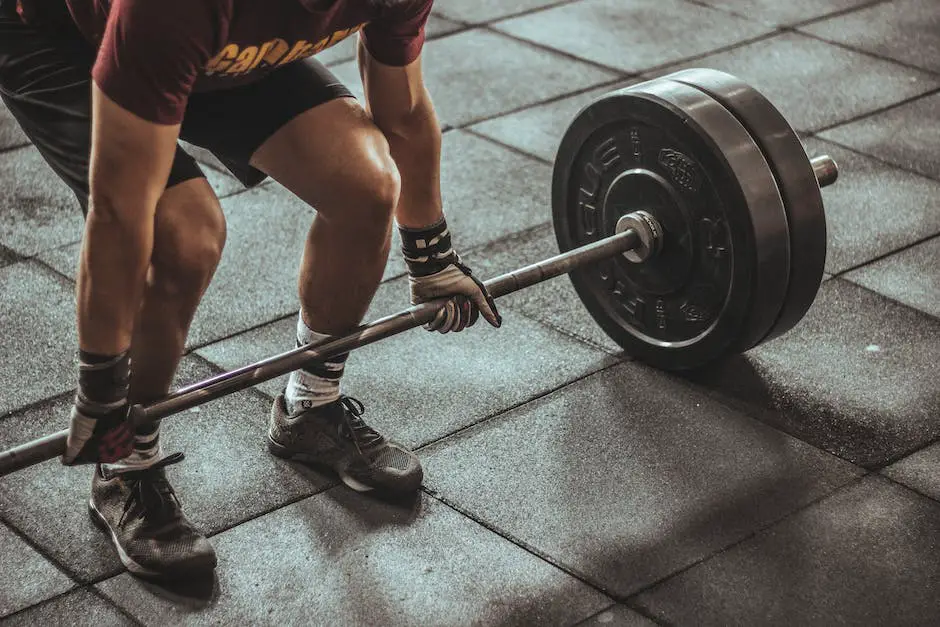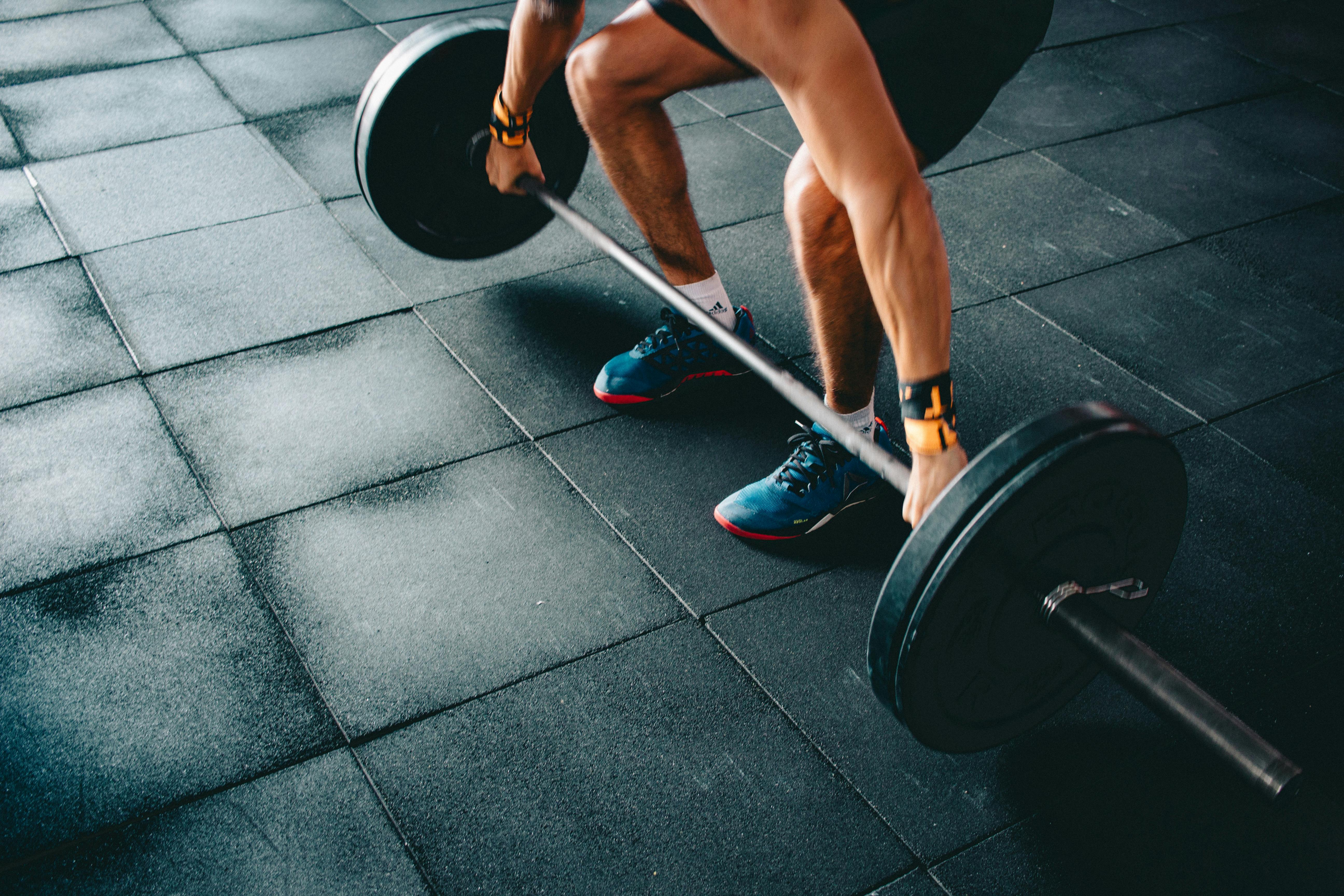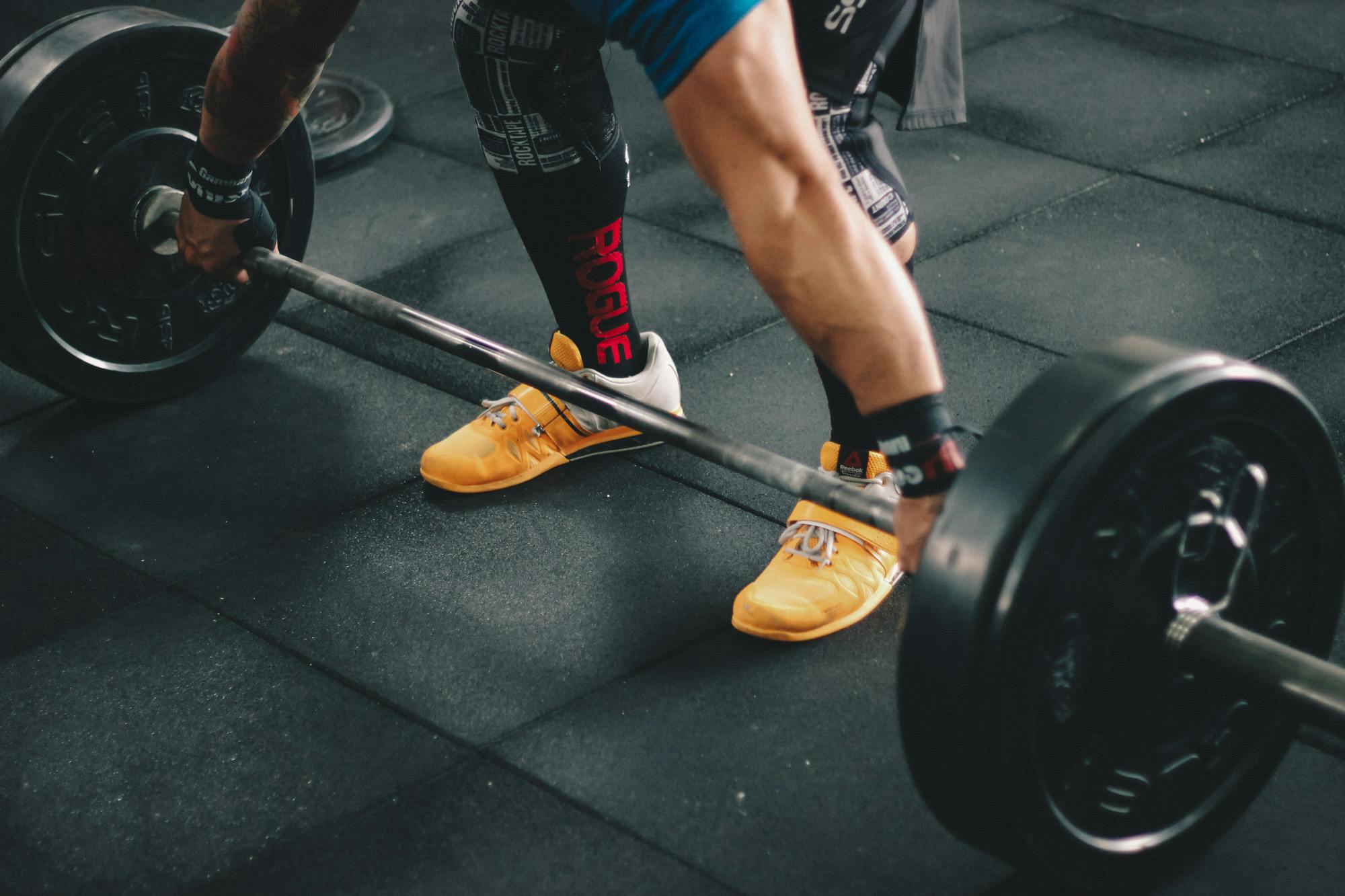How To Wear A Weight Lifting Belt

Weight lifting belts are designed to provide extra support for the lower back and abdominal muscles during heavy weight lifting. The belt should be worn snugly around the waist, over the hips, with the front of the belt lower than the back. Wearing a weightlifting belt can help reduce stress on your lumbar spine while providing additional stability and support while lifting heavier weights. Here is a step-by-step guide on how to properly wear a weight lifting belt.A weight lifting belt is a piece of equipment used to support the lower back while performing heavy lifts. It is usually made of leather or synthetic material and wraps around the waist, providing additional stability and protection from strain. Weight lifting belts are commonly used by powerlifters, bodybuilders, and other athletes who lift heavy weights. They can also be beneficial for casual weightlifting enthusiasts who want extra back support and protection.
The Benefits of Wearing a Weight Lifting Belt
Weight lifting belts have become a popular accessory for gym-goers and powerlifters alike. Wearing a weightlifting belt can offer numerous benefits while you are exercising, such as increased stability and support, improved form, and better breathing mechanics. These benefits can help you lift heavier weights and reduce your risk of injury.
Increased Stability and Support
A weightlifting belt helps to provide extra stability and support during heavy lifts by wrapping around the abdomen and lower back. This helps to keep the spine in alignment while performing compound lifts such as squats, deadlifts, and overhead presses. The belt also increases intra-abdominal pressure which further stabilizes the spine during heavy lifts. This can help to reduce strain on the back muscles as well as the risk of injury.
Improved Form
Using a weightlifting belt can also help to improve your form when lifting heavy weights. The increased stability that comes with wearing a belt allows you to focus more on proper technique rather than worrying about keeping your back straight or maintaining balance. This is especially beneficial for beginners who may not have perfected their form yet or need extra support when lifting heavier weights.
Better Breathing Mechanics
The increased intra-abdominal pressure created by wearing a weightlifting belt also helps to improve your breathing mechanics when lifting heavy weights. This is because it helps to create more tension in the core muscles which allows for deeper and more forceful breaths during lifts such as squats or deadlifts. This improved breathing technique can help you lift heavier weights with greater ease as well as increase overall performance in the gym.
Overall, wearing a weightlifting belt has numerous benefits that can help improve your performance in the gym while reducing your risk of injury at the same time. Whether it’s providing extra stability or helping you focus on proper form, using a weightlifting belt is an invaluable tool that all serious lifters should consider using when they hit the gym.
How To Choose The Right Size Weight Lifting Belt
Weightlifting belts are essential equipment for anyone who is serious about their strength training. But choosing the right size belt can be tricky. Knowing your body measurements is important because it will help you determine which size belt will fit you best. Here are a few tips to help you pick the perfect weightlifting belt for your body type:
First, measure your waist at the narrowest point. This will give you an accurate measurement for your waist size and will help you find the right size belt. Make sure to choose a belt that fits snugly, but not too tight, so that it won’t be uncomfortable or interfere with your movements when lifting weights.
Second, consider the type of material used in the belt. Leather is a popular choice among weightlifters because it is durable and supportive, but there are also synthetic materials available that provide a comfortable fit and good support as well. Make sure to choose a material that will hold up well during regular use and won’t cause any discomfort when lifting weights.
Finally, consider the width of the belt. A wider belt provides more support for heavy lifting and can be more comfortable than a narrower one. However, if you don’t plan on lifting very heavy weights, then a narrower belt might be more suitable for your needs.
By following these tips, you should have no trouble finding the right size weightlifting belt for your body type. Remember to measure carefully so that you get a perfect fit and can enjoy maximum comfort and support while training!
How To Put On A Weight Lifting Belt
Using a weight lifting belt can help to keep your back safe when lifting heavy weights. It is important to know how to put on a weight lifting belt correctly in order to get the most out of it. Here are some steps to help you get the most out of your weightlifting belt:
1. Start by loosening the belt before you begin to put it on properly. This will ensure that you have enough room for adjustment when putting the belt on as well as when taking it off.
2. Make sure that the buckle of the belt is at your lower back, with the end closest to your belly button. This will ensure that the belt is secured and does not come loose while you are lifting.
3. Place both hands on either side of your waist and pull the belt tight so that it fits comfortably but securely around your waist. You should be able to fit two or three fingers between your waist and the belt, so make sure that you don’t pull too tight!
4. Securely fasten the buckle and make sure that it is not too tight or too loose before starting any exercise routine.
5. When finished with your workout, loosen the belt before taking it off so that you can easily slide it off without having to struggle with an overly tight buckle.
By following these steps, you can make sure that you are wearing your weightlifting belt correctly and safely for maximum support and protection during your workouts.
Wearing a Weight Lifting Belt
Weight lifting belts are an important tool for anyone serious about weight training. They help to provide stability and support for the lower back during heavy lifting, reducing the risk of injury. Wearing a belt correctly is essential in order to get the most benefit from it. Here are some tips on how to wear a weight lifting belt properly.
Choose the Right Size
The first step in wearing a weight lifting belt correctly is choosing the right size. The belt should fit snugly around your waist without putting too much pressure on your stomach or hips. It should also allow you to take a deep breath without restriction. You may need to try on multiple sizes before finding one that fits you perfectly.
Positioning the Belt
Once you have chosen the right size, you need to position the belt correctly on your waist. The belt should be worn just above your hip bones and should be tight enough so that it doesn’t slip down when you lift. Make sure that there is no gap between your body and the belt.
Tighten it Properly
Once you have positioned the belt correctly, make sure that it is tightened properly. The best way to do this is to keep your abs tight while taking a deep breath and then tighten the belt as much as possible without restricting your breathing. This will help ensure that you get maximum support from the belt.
Take Care of Your Belt
It is important to take care of your weight lifting belt by cleaning it regularly and storing it in a dry place when not in use. Make sure not to expose it to moisture or extreme temperatures as this can damage the material and reduce its effectiveness.
By following these tips, you can make sure that you are wearing your weight lifting belt properly and getting maximum benefit from it. This will help reduce injuries and improve your overall performance in weight training.

When To Wear A Weight Lifting Belt
Wearing a weight lifting belt can help you lift heavier weights safely and reduce the chance of injury. However, knowing when to wear a weight lifting belt can be tricky. It is important to understand when and for how long you should wear a weight lifting belt.
When deciding when to wear a weight lifting belt, it is important to consider the type of exercise you are doing. For example, if you are doing squats or deadlifts, it may be beneficial to wear a belt as your core muscles will be working harder and you may need additional support. On the other hand, if you are doing lighter exercises such as bicep curls or leg extensions, then wearing a belt may not be necessary.
It is also important to consider how long you should wear a weight lifting belt for each exercise session. Generally speaking, if you are doing heavy lifts such as squats or deadlifts, it is recommended that you wear the belt for the duration of your set. If you are doing lighter exercises such as arm curls or tricep extensions, then wearing the belt for only part of the set may suffice.
Ultimately, it is up to each individual to decide when and for how long they should wear a weight lifting belt during their workouts. It is important to consider the type of exercise being done and how much strain your body is under in order to determine when and for how long it would be beneficial to wear a weight lifting belt.
Can Wearing a Patella Knee Strap Affect How I Wear a Weight Lifting Belt?
When using a weight lifting belt, many wonder about the impact of additional gear like knee straps. Proper positioning is essential. For optimal results, consider these tips for wearing a patella knee strap to ensure it doesn’t interfere with your belt’s effectiveness or your overall lifting form.
How To Wear A Weight Lifting Belt For Squats
Weight lifting belts are a great way to protect your back when performing squats. Wearing a belt for squats can help you maintain proper form and maximize your results. Here is a guide to help you understand how to wear a weight lifting belt for squats.
When wearing a weight lifting belt for squats, it is important to make sure that the belt fits snugly around your waist. You should be able to place two fingers between the belt and your body at all times. If the belt is too tight, it can restrict your breathing and movement, so make sure it fits comfortably.
The next step is to position the belt on your body correctly. The belt should be placed around the lower part of your abdomen, just above your hip bones. It should also be snug enough that you can feel it pressing into your lower back as you squat down. This will help keep your spine in an ideal position as you perform the exercise.
When performing squats with a weightlifting belt, it is important to keep in mind that the main purpose of the belt is not to increase the amount of weight you are using but rather to stabilize and protect your spine from potential injury while still allowing you to squat with good form and technique. Thus, it is important not to use too much additional weight when wearing a weight lifting belt for squats; this could lead to muscle strain or injury if done incorrectly.
Finally, when finished with each set of squats, make sure you take off the weightlifting belt slowly and carefully. This will help ensure that you do not strain any muscles in your back or abdomen while removing it from your body.
Overall, following these simple steps will help ensure that you get the most out of wearing a weightlifting belt for squats while also protecting yourself from potential injury during exercise. With proper form and technique, wearing a weightlifting belt can be an effective tool in maximizing results while helping keep your spine safe during exercise!
How To Wear A Weight Lifting Belt For Deadlifts
Wearing a weight lifting belt for deadlifts can provide several benefits that make the exercise safer and more effective. It can help reduce stress on your lower back by providing additional support and stability while lifting, allowing you to lift heavier weights with less risk of injury. Additionally, a weightlifting belt can help maintain proper form and posture during the lift, allowing you to get the most out of your workout. Here are some tips on how to wear a weightlifting belt for deadlifts safely and effectively.
When wearing a weightlifting belt for deadlifts, it is important to ensure that it is properly fitted. The belt should be snug around your waist, but not too tight that it restricts your breathing or movement. It should also be positioned slightly above your hip bones so that it does not slip down as you lift. Once the belt is fitted correctly, it should be secured with a fastener such as Velcro or buckles.
When performing deadlifts with a weightlifting belt, it is important to ensure that you are using proper form and technique. This includes keeping your back straight throughout the entire movement and avoiding any rounding of the spine. Additionally, you should keep your core engaged throughout the entire lift and drive through your heels while pushing your hips forward at the top of each rep.
Once you have achieved proper form and technique with a weightlifting belt, you can begin adding resistance in order to continue progressing in strength and size. Start by adding small amounts of weight until you are comfortable lifting heavier weights with proper form and technique. As you become more comfortable with heavier weights, gradually add more resistance until you reach your desired goals.
In conclusion, wearing a weightlifting belt for deadlifts can provide several benefits including increased support for lower back muscles, improved posture during lifts, better control over form and technique, as well as allowing for heavier weights to be lifted safely and effectively. When wearing a belt for deadlifts it is important to ensure it is fitted correctly before beginning any exercise routine or adding additional resistance. Following these tips will help ensure that you get the most out of each workout session while reducing the risk of injury due to improper form or technique.

Conclusion
Weight lifting belts are an important tool for those looking to increase their strength and stability and protect their lower back during heavy lifts. When used correctly, they can provide extra stability and support, which in turn can help you lift heavier weights with greater confidence. It’s important to choose the right size and type of belt for your body and your activity level, as well as practice good form when lifting. While wearing a weight lifting belt is not necessary for everyone, it can be beneficial for those who want to take their workouts to the next level.
Overall, wearing a weight lifting belt is an effective way to help you increase your strength and reduce the risk of injury during heavy lifts. With safety being a priority, make sure that you select the right type of belt for your body type and activity level. Additionally, practice proper form with or without a belt for maximum benefit during your workouts.
